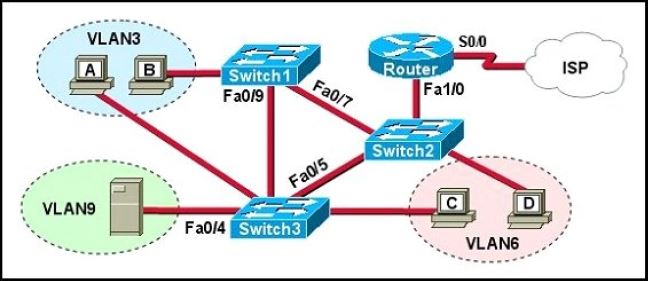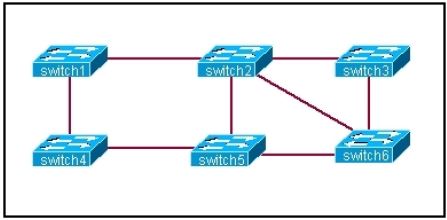Which of the following are Wide Area Network (WAN) protocols? (Choose three.)
A. PPP
B. AAA
C. WEP
D. STP
E. HDLC
F. Frame Relay
Explanation:
Point-to-Point Protocol (PPP), High-Level Data Link Control (HDLC), and Frame Relay are WAN protocols.
PPP is a WAN protocol is defined in Request for Comments (RFCs) 1332, 1661, and 2153. PPP works with asynchronous and synchronous serial interfaces as well as High-Speed Serial Interfaces (HSSI) and Integrated Services Digital Network (ISDN) interfaces (BRI and PRI).
Some of the characteristics of PPP are:
– Can be used over analog circuits
– Can encapsulate several routed protocols, such as TCP/IP Provides error correction
– Should be used rather than HDLC when non-Cisco routers are involved, as it is implemented consistently among vendors PPP authentication can be used between the routers to prevent unauthorized callers from establishing an ISDN circuit
To change the encapsulation from the default of HDLC to PPP when connecting to a non-Cisco router, such as a Juniper, you would use the following command:
router(config)#interface serial S0 router(config-if)#encapsulation ppp
HDLC is a WAN protocol used with synchronous and asynchronous connections. It defines the frame type and interaction between two devices at the Data Link layer.
Frame Relay is a group of WAN protocols, including those from International Telecommunication Union (ITU-T) and American National Standards Institute (ANSI). Frame Relay defines interaction between the Frame Relay customer premises equipment (CPE) and the Frame Relay carrier switch. The connection across the carrier’s network is not defined by the Frame Relay standards. Most carriers, however, use Asynchronous Transfer Mode (ATM) as a transport to move Frame Relay frames between different sites.
Authentication, Authorization, and Accounting (AAA) is incorrect because this is a scheme to monitor access control and activities on networked devices. Wired Equivalent Privacy (WEP) is a security scheme for wireless networks and therefore it is incorrect.
Spanning Tree Protocol (STP) is for loop avoidance in redundant topologies. This option is incorrect because this protocol is used on Local Area Network (LAN).


